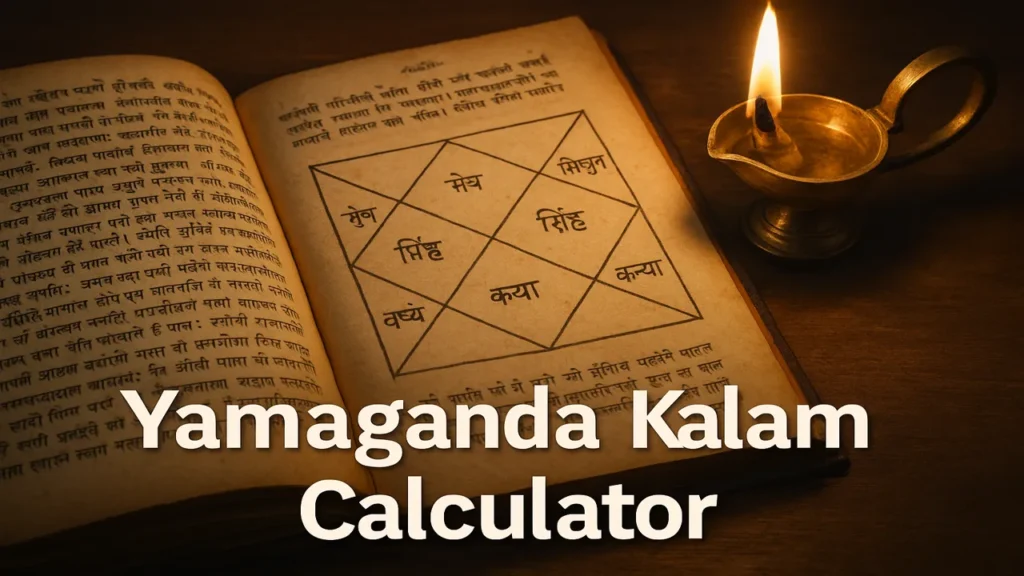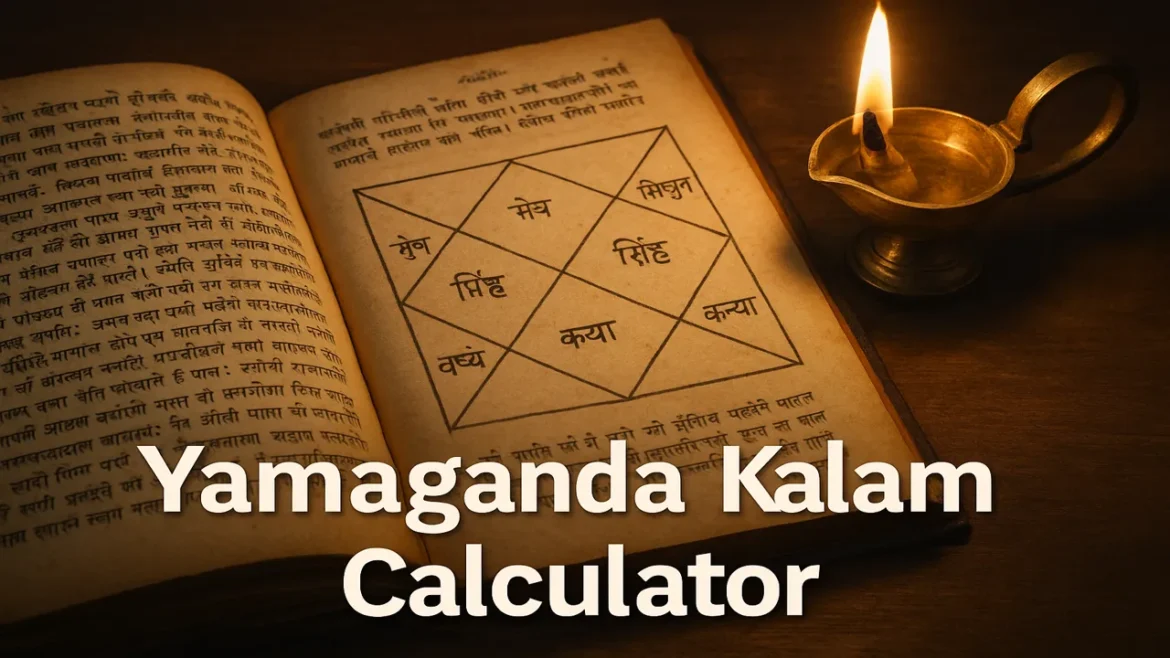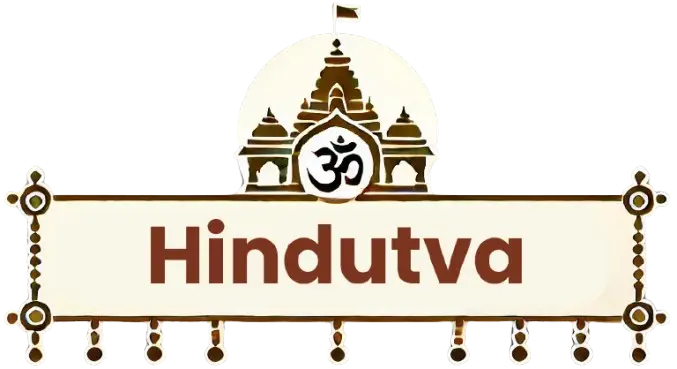Discover the exact timing of Yamaganda Kalam for your location with our free calculator tool. Plan auspicious activities, avoid inauspicious hours, and learn about this important Vedic astrology concept. Our accurate calculator provides precise Yamaganda Kalam timings based on astronomical data for any date and location worldwide. Make informed decisions about travel, new ventures, and important ceremonies with this essential Hindu astrology resource.
In the intricate tapestry of Hindu astrology, various time periods throughout the day hold significant importance, influencing decisions from mundane daily activities to life-changing events. Among these temporal divisions, Yamaganda Kalam stands out as one of the most notable inauspicious periods that has guided the timing decisions of Hindu practitioners for millennia. This comprehensive guide explores the concept, calculation, significance, and practical applications of Yamaganda Kalam in modern life.

What is Yamaganda Kalam?
Yamaganda Kalam (also spelled Yamagandam or Yamakantaka) derives from two Sanskrit words: “Yama,” referring to the Hindu deity of death and righteousness, and “Ganda,” meaning danger or obstruction. As the name suggests, this time period is believed to be under the influence of Lord Yama, potentially bringing obstacles and negative energies that could impede success in activities initiated during this timeframe.
In Vedic astrology (Jyotish), Yamaganda is one of the five inauspicious time periods collectively known as “Panchaka Kalam,” which include:
- Rahu Kalam: The period ruled by the shadow planet Rahu
- Gulika Kalam: The period ruled by Saturn’s son Gulika
- Yamaganda Kalam: The period ruled by Lord Yama
- Varjyam: The period when the Moon is in transition between constellations
- Durmuhurtam: Literally meaning “bad time,” considered inauspicious for new beginnings
Dr. Aryan Mishra, historian and cultural analyst, notes: “These time divisions weren’t created arbitrarily but evolved through centuries of careful astronomical observations and spiritual insights. The rishis (sages) who developed this system understood the subtle cosmic energies that influence earthly affairs.”
Historical and Philosophical Significance
The concept of Yamaganda Kalam is deeply rooted in Hindu cosmology and the understanding of time as cyclical and qualitative rather than merely quantitative. According to Sandeep Vohra, philosopher and Vedic scholar at Hindutva.online, “The Hindu understanding of time is fundamentally different from the Western linear conception. In Hindu philosophy, each moment carries specific qualities and energies that can either support or hinder particular activities.”
Archaeological evidence suggests that these time calculations have been part of Indian cultural practices for at least 5,000 years, with references found in ancient texts like the Vedas and later elaborated in specialized astrological texts such as Muhurta Shastra (the science of timing).
Calculation of Yamaganda Kalam
Unlike fixed time periods, Yamaganda Kalam varies each day, occurring at different times depending on the day of the week. The calculation follows a systematic approach based on the division of daylight hours:
- Determine the exact time of sunrise and sunset for your specific location
- Calculate the total duration of daylight (from sunrise to sunset)
- Divide this duration into eight equal parts called “muhurtas”
- Depending on the day of the week, a specific muhurta is designated as Yamaganda Kalam
The schedule for Yamaganda Kalam throughout the week is as follows:
- Sunday: 4th muhurta (mid-morning to early afternoon)
- Monday: 7th muhurta (late afternoon)
- Tuesday: 5th muhurta (around noon)
- Wednesday: 8th muhurta (late afternoon to sunset)
- Thursday: 6th muhurta (early to mid-afternoon)
- Friday: 3rd muhurta (morning)
- Saturday: 1st muhurta (just after sunrise)
For example, if sunrise is at 6:00 AM and sunset is at 6:00 PM, the day length is 12 hours or 720 minutes. Dividing this by 8 gives us muhurtas of 90 minutes each. On a Tuesday, the 5th muhurta would be from 12:30 PM to 2:00 PM, which would be the Yamaganda Kalam for that day.
Modern Applications and Scientific Perspective
While traditional Hindu households strictly adhere to avoiding important activities during Yamaganda Kalam, modern practitioners often balance these ancient guidelines with contemporary demands. Priya Sharma, political analyst and social commentator, observes: “Today’s Hindu practitioners navigate between tradition and modernity. Many professionals still consult panchang before scheduling important meetings or signing contracts, while adapting to the requirements of global business schedules.”
From a scientific perspective, some researchers have attempted to correlate these time-based restrictions with potential electromagnetic variations or gravitational effects throughout the day. However, these correlations remain largely speculative and lack conclusive scientific evidence.
Anjali Deshmukh, health and wellness expert, suggests: “Even if one does not subscribe to the metaphysical aspects, observing Yamaganda Kalam can serve as a mindfulness practice, making us more conscious of timing and creating natural breaks in our schedule that may benefit our mental health.”
Yamaganda Kalam Calculator: A Practical Tool
To simplify the complex calculations required to determine Yamaganda Kalam for specific locations and dates, various digital tools and applications have been developed. These calculators typically require the following inputs:
- Date
- Location (city or coordinates)
- Local timezone
Based on astronomical algorithms, these tools then calculate the precise timing of Yamaganda Kalam for the specified parameters.
Activities to Avoid During Yamaganda Kalam
Traditional wisdom advises against initiating the following activities during Yamaganda Kalam:
- Starting new ventures or businesses
- Signing important contracts or agreements
- Embarking on journeys, especially long-distance travel
- Conducting important ceremonies or rituals (except funeral rites)
- Making major financial decisions or investments
- Moving into a new home (Griha Pravesh)
- Starting medical treatments (except emergency care)
- Beginning education or training programs
Rajiv Anand, spiritual guide and blogger, explains: “The avoidance of certain activities during Yamaganda is not about fatalism or superstition but about aligning human actions with cosmic rhythms. It’s similar to how we wouldn’t plant seeds during a drought—we’re looking for the most supportive conditions for our endeavors.”
Activities Permissible During Yamaganda Kalam
While many activities are discouraged during Yamaganda Kalam, certain activities are considered neutral or even favorable:
- Routine daily activities and ongoing work
- Emergency medical treatments
- Spiritual practices, prayer, and meditation
- Completing (not starting) already initiated projects
- Funeral rites and ceremonies related to ancestors
Interestingly, activities related to Lord Yama’s domain, such as rituals for ancestors or finishing tasks (representing endings rather than beginnings), are considered appropriate during this period.
Regional Variations and Cultural Practices
The observance of Yamaganda Kalam varies across different regions of India and among different Hindu communities worldwide. Neha Kulkarni, cultural writer and journalist, notes: “In South India, particularly in Tamil Nadu and Kerala, the adherence to Yamaganda Kalam is quite strict, with even wedding ceremonies being scheduled to avoid this period. In contrast, some North Indian communities may place greater emphasis on other astrological factors.”
Among the diaspora Hindu communities in countries like the United States, United Kingdom, and Australia, many families continue to observe these traditions, especially for significant life events, creating a bridge between their ancestral heritage and contemporary global lifestyles.
Yamaganda Dosha: When Born During Yamaganda Kalam
Hindu astrology also recognizes a specific astrological condition called “Yamaganda Dosha,” which affects individuals born during Yamaganda Kalam. This condition is believed to potentially influence personality traits and life experiences.
Characteristics often associated with Yamaganda Dosha include:
- Tendency toward impulsiveness or hurried decisions
- Challenges related to authority figures
- Potential obstacles in career advancement
- Difficulties in completing long-term projects
However, it’s important to note that Vedic astrology considers the entire birth chart rather than isolated factors. As Sandeep Vohra explains, “Any single dosha (defect) in a horoscope must be evaluated in the context of the complete birth chart. Remedial measures can often mitigate challenging astrological conditions.”
Remedies for Yamaganda Dosha
For those concerned about being born during Yamaganda Kalam or needing to undertake important activities during this period, traditional remedies include:
- Recitation of mantras dedicated to Lord Yama, particularly the Maha Mrityunjaya Mantra
- Charitable activities, especially those related to end-of-life care
- Wearing specific gemstones as recommended by qualified astrologers
- Performing specific pujas (worship rituals) to Lord Yama
- Feeding crows, which are considered messengers of Lord Yama in Hindu mythology
Arvind Mehta, environmentalist and nature conservationist, adds an interesting ecological perspective: “Many traditional Hindu practices, including those related to Yamaganda remedies like feeding crows, served important ecological functions. Crows are natural scavengers that help maintain environmental cleanliness.”
Scientific Skepticism and Rational Perspective
While millions follow Yamaganda Kalam guidelines, the scientific community generally views such time-based astrological concepts as lacking empirical evidence. Critical thinkers argue that the avoidance of activities during certain hours based on planetary positions has no demonstrable causal mechanism according to current scientific understanding.
Dr. Aryan Mishra offers a balanced view: “Ancient wisdom often contains insights that modern science has yet to fully explore. However, it’s also important to approach tradition with critical thinking. The psychological benefits of following structured timing systems and the cultural cohesion they provide are valuable regardless of one’s position on their metaphysical validity.”
Yamaganda Kalam in the Digital Age
The advent of technology has transformed how people track and observe Yamaganda Kalam. Numerous websites, mobile applications, and digital calendar integrations now provide instant calculations of inauspicious time periods, making this ancient practice more accessible in modern life.
This technological adaptation reflects the remarkable resilience of Hindu traditions, which continue to evolve while maintaining their essential character across centuries. As Priya Sharma observes, “The digitization of practices like Yamaganda Kalam calculations demonstrates how ancient Hindu wisdom continues to find relevance and expression through contemporary mediums.”
Practical Tips for Modern Practitioners
For those who wish to honor this tradition while living in a fast-paced modern world, consider these practical approaches:
- Plan ahead by checking Yamaganda Kalam timings at the beginning of each week
- Schedule important meetings and activities outside these periods when possible
- Use digital tools and apps for quick reference of inauspicious times
- Balance tradition with practicality – when unavoidable, perform brief prayers before undertaking necessary activities during Yamaganda Kalam
- Focus on completion rather than initiation during these periods
Yamaganda Kalam represents one facet of the sophisticated temporal awareness embedded in Hindu tradition. Whether approached as spiritual wisdom, cultural heritage, or simply as a mindfulness practice, the concept offers valuable perspectives on the qualitative nature of time.
In today’s multicultural global society, such traditions provide a connection to ancestral wisdom while adapting to contemporary realities. The enduring relevance of Yamaganda Kalam—evidenced by its continued observance across generations and continents—speaks to the depth and adaptability of Hindu astrological traditions.
For those seeking to align their activities with auspicious timing or simply to understand this significant aspect of Hindu culture, the study of Yamaganda Kalam offers insights into a worldview where time is not merely a neutral medium but a dynamic force influencing human affairs.
By Sandeep Vohra, Philosopher & Vedic Scholar at Hindutva.online
Sandeep Vohra holds a Master’s degree in Sanskrit Literature and specializes in Hindu philosophy and Vedic astrology. With over 15 years of experience studying ancient texts, he has authored several works on Hindu philosophical systems and time concepts.
Email: sandeepvohra@hindutva.online

